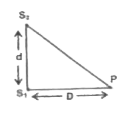The eye can detect 5×104 photons (m2s)−1 of green light (λ=5000A), whole ear can detect 10−13Wm2 . As a power detector, which is more sensitive and by what factor?
Eye is more sensitive and by a factor of 5.00
Ear is more sensitive by a factor of 5.00
Both are equally sensitive
Eye is more sensitive by a factor of 10−1
The correct Answer is:A
Energy received by the eye,
E=nhcλ
=5×1094×6.610−34×3×1085000×10−10
=0.2×10−13Wm−2
So, eye in more sensitive by a factor of 10.200=5.00
Topper's Solved these Questions
- BOOK - CENGAGE PHYSICSCHAPTER - PHOTOELECTRIC EFFECTEXERCISE - Multiple Correct10videos
PHOTOELECTRIC EFFECT
- BOOK - CENGAGE PHYSICSCHAPTER - PHOTOELECTRIC EFFECTEXERCISE - Linked Comprehension44videos
PHOTOELECTRIC EFFECT
- BOOK - CENGAGE PHYSICSCHAPTER - PHOTOELECTRIC EFFECTEXERCISE - Subjective16videos
PHOTOELECTRIC EFFECT
- BOOK - CENGAGE PHYSICSCHAPTER - NUCLEIEXERCISE - QUESTION BANK59videos
NUCLEI
- BOOK - CENGAGE PHYSICSCHAPTER - RAY OPTICSEXERCISE - DPP 1.612videos
RAY OPTICS
Similar Questions
Estimate the following the following two numbers should be interesting. The first number will tell you why radio engieers do not need to worry much about a photons. The second number tells you why our eye can never "count photon" even in barely detectable light.
(i) The number of photons emitted per second by a MW transmitter of 10kW power emitting radiowaves of length 500m.
(ii) The number of photons entering the pupil of our eye per second corresponding to the minimum intensity of white light that we humans can precieve (~10−10Wm−2). Take the area of the pupil to be about 0.4cm2, and the average frequency of white light to be about 6×104Hz.(h=6.6×10−34J)View SolutionThe rate constant of a reaction is 5×10−8 mole litre−1sec−1 .How long it would take to change concentration for 4×10−2M to 2×10−2M?
View Solution
Knowledge Check
- Question 1 - Select One
Eye of an experimenter detects the green light (λ=4000Å) at 5×104 photons per square meter per second and ear can detect 10−13 watt per square metre. The eye is sensitive as a power detector in comparison to the ear by a factor of
A2 timesB3 timesC4 timesD5 times - Question 2 - Select One
The human eye can barely detect a yellow lings (λ=6000A) that delivers 1.7×10−18W to the retina. The number of photons per second falling on the eye is nearest to
A5×109B5000C50D5 - Question 3 - Select One
At t=O, light of intensity 1012 photons/s−m2 of energy 6eV per photon starts falling on a plate with work founction 2.5eV If area of the plate is 2×10−4m2 and for every 105 photons one photoelectron is emitted, charge on the plate at t=25 s is
A8×10−15CB4×10−14CC12×10−10CD16×10−12C
Two sources S1 and S2 emitting light of wave lengths 600 nm are placed a distance 1.0 x 102 cm apart..A detector can be moved on the line which is perpendicular to SiS2 . Find out the position of first.minimum detected.
 View Solution
View SolutionFind the number of photons entering the pupil of our eye per second corresponding to the minimum internsity of white light that we humans can perceive (−10−10Wm−2). Take the area of the pupil to be about 0.4cm2, and the average frequency of white light to be about 6×1014Hz.
View SolutionThe faintest sound the human ear can detect at a frequency of 1000 Hz correspond to an intensity of about 1.00×10−12Wm2, which is called threshold of hearing. The loudest sounds the ear can tolerate at this frequency correspond to an intensity of about 1.00Wm2, the threshold of pain. Detemine the pressure amplitude and displacement amplitude associated with these two limits. Take speed of sound=342ms and density of air=1.20kgm3
View SolutionThreshold frequency of a metal is 5×1013s−1 upon which 1×1014s−1 frequency light is focused. Then the maximum kinetic energy of emitted electron is
View SolutionThe pupil allows light to pass through it and has a diameter of 2×10−3m. If minimum light intensity that should enter the eye is 1.8×10−10W/m−2, then find the number of photon in visible range must enter the pupil to have vision. Wavelength of photon in visible range can be taken as 5,500Å .
View Solution

